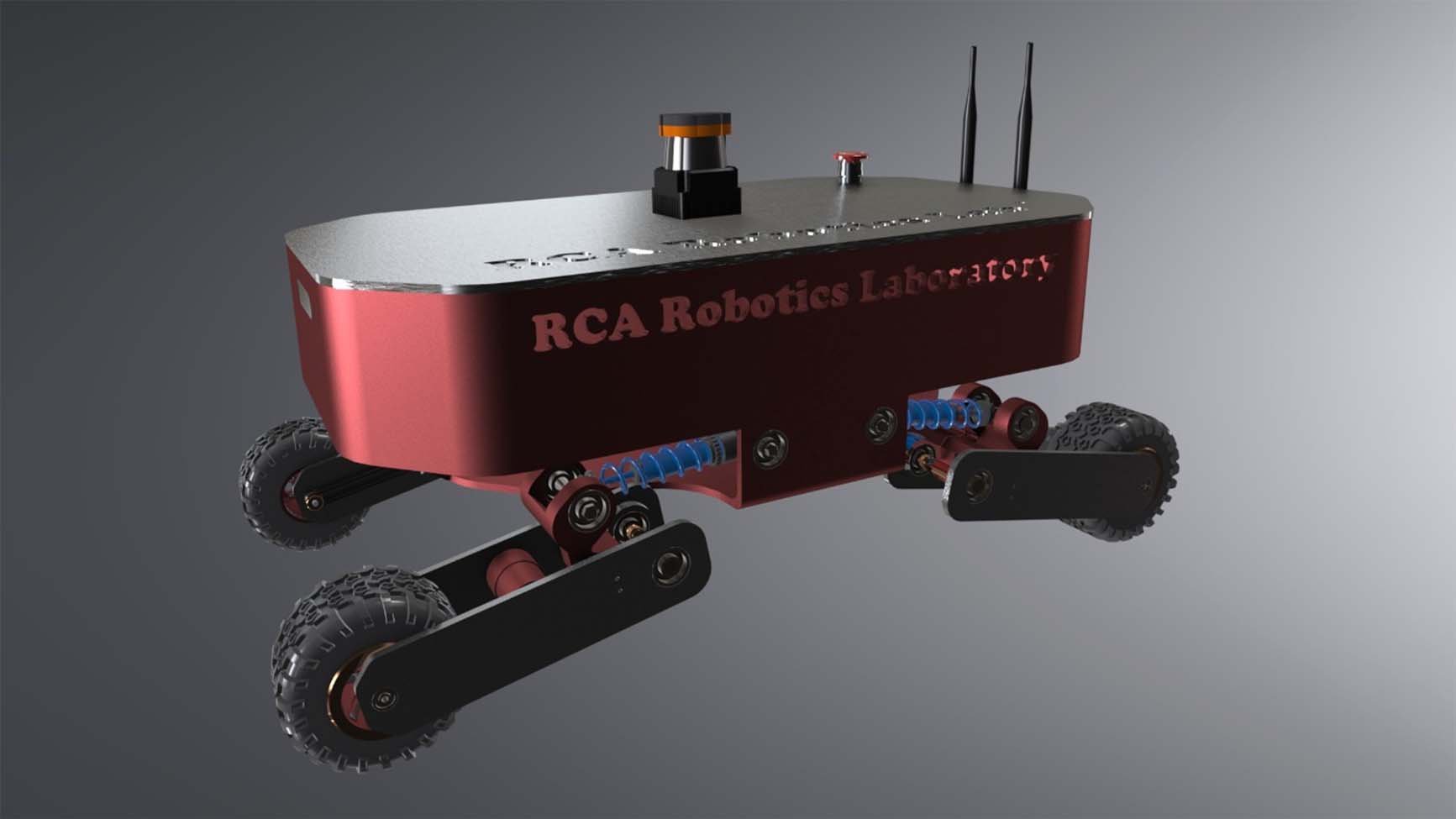
Key details
Date
- 25 November 2021
Author
- RCA
Read time
- 2 minutes
Since 2017 the RCA Robotics Laboratory has been developing new robotic technologies to improve human lives and enhance human safety, access and performance. With design innovations taking inspiration from nature, art and the experimental sciences to solve problems and improve systems across medicine, energy, social care and industrial infrastructure.
Key details
Date
- 25 November 2021
Author
- RCA
Read time
- 2 minutes
1. Improving robot mobility to remove humans from hazardous environments
People working in hazardous environments either due to extreme height or toxic materials have been using robots to operate remotely and avoid the need to risk human life and health. Unfortunately these robots have limits due to their inability to navigate complex environments. Researchers at the RCA Robotics Laboratory working on the ‘Getting a Grip’ project have been developing robots using soft composite materials and deep learning that respond to the textural properties of environments to reduce these issues.
Soft materials create an interfacing layer for the robot, enabling physical attachment and providing live information on the contours of terrains and objects – allowing them to improve navigation and manipulation of objects over time. Researchers here took inspiration from the octopus which uses its sensitive limbs to navigate its environment.
2. Creating robotic repair arms to repair wind farm turbine blades
Another project removing humans from hazardous situations. This Innovate UK funded initiative brings together researchers from across the UK to demonstrate that wind turbine blades can be repaired without human operatives using drone technology and robotic repair units.
Researchers at the RCA Robotics Laboratory have developed an autonomous robotic repair arm that can switch between cleaning, sanding and topcoating damaged areas of blades, providing real-time feedback and visualisation. The arm is operated using a bespoke interface system that puts humans out of harm’s way from offshore conditions, which can include lightning strikes, high-speed winds and gales, as well as dangerously high waves.
3. Developing wearable gadgets to minimise the impact of Dementia

The number of people living with dementia, 55 million worldwide in 2020, is predicted to double every twenty years. A new project that started in November 2021 aims to produce a wearable device that minimises the impact of dementia by covering for the memory loss that reduces the ability of dementia sufferers to complete tasks and enjoy demanding activities.
Reminisys lead by principal investigator, Dr Sina Sareh and early career researcher, Shahrooz Shahin is supported by MedTech SuperConnector funding. The project aims to create a bespoke visuotactile interface using voice-tags, AI techniques and a secure cloud-based memory and computing centre to remind users of the location of objects and names of people and places that were seen at some point in the past.
4. Integrating Artificial Intelligence (AI) into the design of products and service

In partnership with Hong Kong Polytechnic University (PolyU), the PolyU|RCA Artificial Intelligence Design Laboratory (AIDL) will address industry demands for efficiency, automation and customising products and services in the innovation and technology era. Outcomes from the Laboratory will support industries including healthcare, manufacturing, hospitality and retail services.
Their current project in development at the RCA in partnership with our Computer Science Research Centre is a bespoke AI-powered robotic system for exploration of unknown environments to enable fast obstacle detection and minimise required processing hardware.
5. 5. Developing medical training system using soft robotics and virtual reality to mimic internal organs

The Haptic Illusion is a learning environment for medical students that uses a simple tactile device to mimic the complex feel of internal organs. The project originated as the final project of our MA/MSc Innovation Design Engineering graduate Dongyuan Li. Alongside the RCA Robotics Laboratory, Dongyuan has secured MedTech SuperConnector funding to develop his medical technology intervention as a business.
Medical students were previously taught to examine internal organs physically using real patients, physical specimens or rubber models. The Haptic Illusion’s adaptable system offers the same textural information without the cost and impracticality of these methods.
